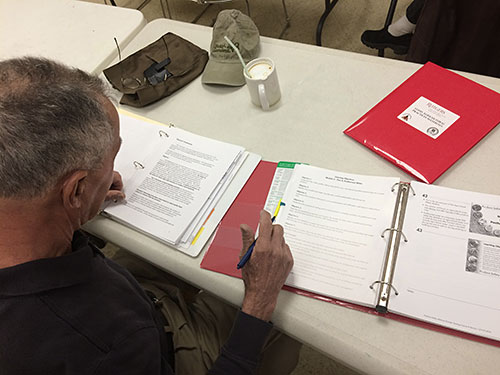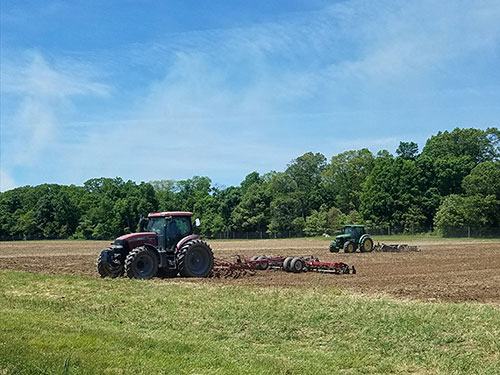
Fact Sheet FS1294
What is a SWOT Analysis?
A SWOT Analysis is an examination of Strengths, Weaknesses, Opportunities and Threats as they pertain to a specific idea or business decision.
Why should I perform a SWOT Analysis?
When beginning or expanding a farm, a SWOT analysis should be performed on the proposed idea because it will reveal more information about possible pitfalls and the potential for success. It can also bring up new ideas or solutions to deficiencies in the operation by examining the situation logically. Conducting a SWOT analysis can uncover opportunities that you are well-placed to exploit.
What are strengths and weaknesses in a SWOT Analysis?
These are features that are internal to the business. In other words, they describe things that are true about yourself or your business operation that exist regardless of outside conditions. Examples of this can be your work experience, education, facilities, existing cash or anything that is an asset or deficiency that is under your control.
What are opportunities and threats in a SWOT Analysis?
These are situations that exist external to your business and are out of your control. Things like governmental regulations on your product or the cost of inputs due to an increase in gas prices, for example.
Who should do the analysis?
Every team member involved in the decision making and planning of the operation should perform one independently. Then, all team members should discuss the results together.
How do I perform a SWOT Analysis?
Use the template below to examine each aspect of the idea/crop as it pertains specifically to you and your situation. Try to be specific enough to identify the core cause or source of each item. List as many points as you can think of for each topic.
How should I use the analysis once I am finished?
- Use it to capitalize on your strengths and opportunities when creating your strategic plan, mission statement, marketing plan and/or business plan.
- Prioritize the deficiencies that need to be addressed and develop SMART Goals to resolve them adequately. More information on writing SMART goals can be found in Rutgers Cooperative Extension fact sheet FS1263.
- Since the weaknesses are internal (under your control) a plan can be made to improve them.
- Since the threats are external (not under your control) develop risk management plans to prevent, reduce or eliminate the threat of the risk to minimize its potential impact.
Next Steps
See the SWOT template that accompanies this page to begin conducting your SWOT analysis. The Ultra-Niche Crops Project also has a 2-minute video on conducting a SWOT analysis available at the Rutgers Cooperative Extension Ultra-Niche Crops YouTube channel.
SWOT Template
Crop/Idea: ____________________________________________
| Strengths | Weaknesses | |
|---|---|---|
| Financial | ||
| Example: | Good credit history. | No savings. |
| Financial Actions | ||
| Example Action: | Action: Use good credit to borrow capital. | Create or reevaluate your budget |
| Marketing | ||
| Example: | Experience in customer service industries. | No knowledge of website design or social media. |
| Marketing Actions | ||
| Example Action: | Make good customer service a trademark. | Take a class or view a webinar online on the topic |
| Personnel | ||
| Example: | Background in agriculture. | Starting the operation alone; no supervisory experience. |
| Personnel Actions | ||
| Example Action: | Teach other farmers in exchange for items/services you need. | Find a mentor or get advice from other farmers |
| Production | ||
| Example: | Knowledge of the crop, culture, and management. | No pesticide license (essential for this crop in the region.) |
| Production Actions | ||
| Example Action: | Grow what you know first, start new crops on a small scale. | Contact your local extension office about getting a license |
| Sales | ||
| Example: | Have already begun networking with potential customers. | Starting a new market in a new town. |
| Sales Actions | ||
| Example Action: | Get them to commit to buying early, or enlist them in helping. | Do your market research! |
| Facilities | ||
| Example: | Own the land. | It is deed restricted. |
| Facilities Actions | ||
| Example Action: | Reinvest the money you saved on rent into the operation or into investments. | Review your specific deed restrictions and be sure to stay within the guidelines |
| Other Action | ||
| Opportunities | Threats | |
|---|---|---|
| Market Trends | ||
| Example: | Current market demands local product. | Demand for local may change quickly. |
| Market Trends Actions | ||
| Example Action: | Market your product and business as local. | Stay informed and educated and be ready to adapt with the market |
| Competition | ||
| Example: | Only one other grower cultivates same product locally. | Some local growers are considering growing same crop. |
| Competitions Actions | ||
| Example Actions: | Market yours as the "one and only". | Grow other varieties of the same crop. |
| Cultural & Demographic | ||
| Example: | Enlarging ethnic enclave in the region. | Local cultural clashes between customers. |
| Cultural Actions | ||
| Example Actions: | Target marketing to that community. | Educate yourself about a specific culture. |
| Input Costs | ||
| Example: | Specialized, used equipment is easy to find. | New, specialized equipment is cost prohibitive. |
| Input Cost Actions | ||
| Example Actions: | Buy used equipment while it is available. | Share with other farmers or rent equipment when needed |
| Technology | ||
| Example: | New efficient technology is rapidly increasing. | International technology out-competes domestic. |
| Tech. Actions | ||
| Example Actions: | Use efficient technology to minimize labor costs or waste. | Keep up-to-date on international advances. |
| Environment | ||
| Example: | Climate moderated by close proximity to ocean. | More risk of hurricane damage at harvest. |
| Environmental Actions | ||
| Example Actions: | Take advantage of the long growing season. | Investigate buying crop insurance. |
| Regulations | ||
| Example: | Recent de-regulations for small-scale producers. | Cumbersome paperwork required for direct-sales. |
| Regulation Actions | ||
| Example Actions: | Grow as much product as the limit allows while still staying "small". | Stay organized. Watch a business management webinar on the rules. |
| Other Action | ||
June 2018
Copyright © 2024 Rutgers, The State University of New Jersey. All rights reserved.
For more information: njaes.rutgers.edu.
Cooperating Agencies: Rutgers, The State University of New Jersey, U.S. Department of Agriculture, and Boards of County Commissioners. Rutgers Cooperative Extension, a unit of the Rutgers New Jersey Agricultural Experiment Station, is an equal opportunity program provider and employer.




 Project sponsored by the USDA-NIFA Beginner Farmer and Rancher Development Program.
Project sponsored by the USDA-NIFA Beginner Farmer and Rancher Development Program.